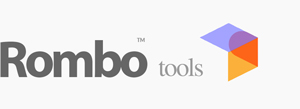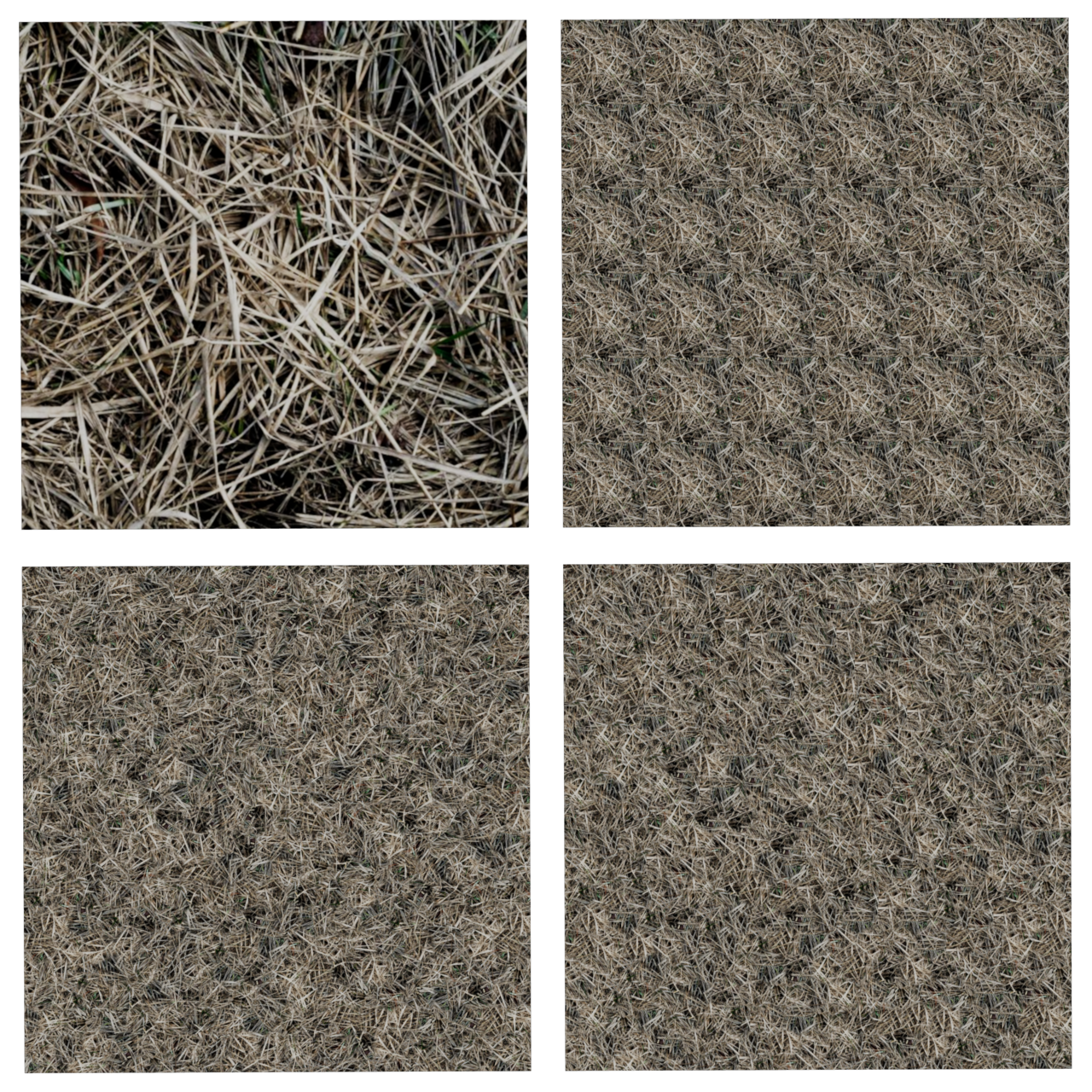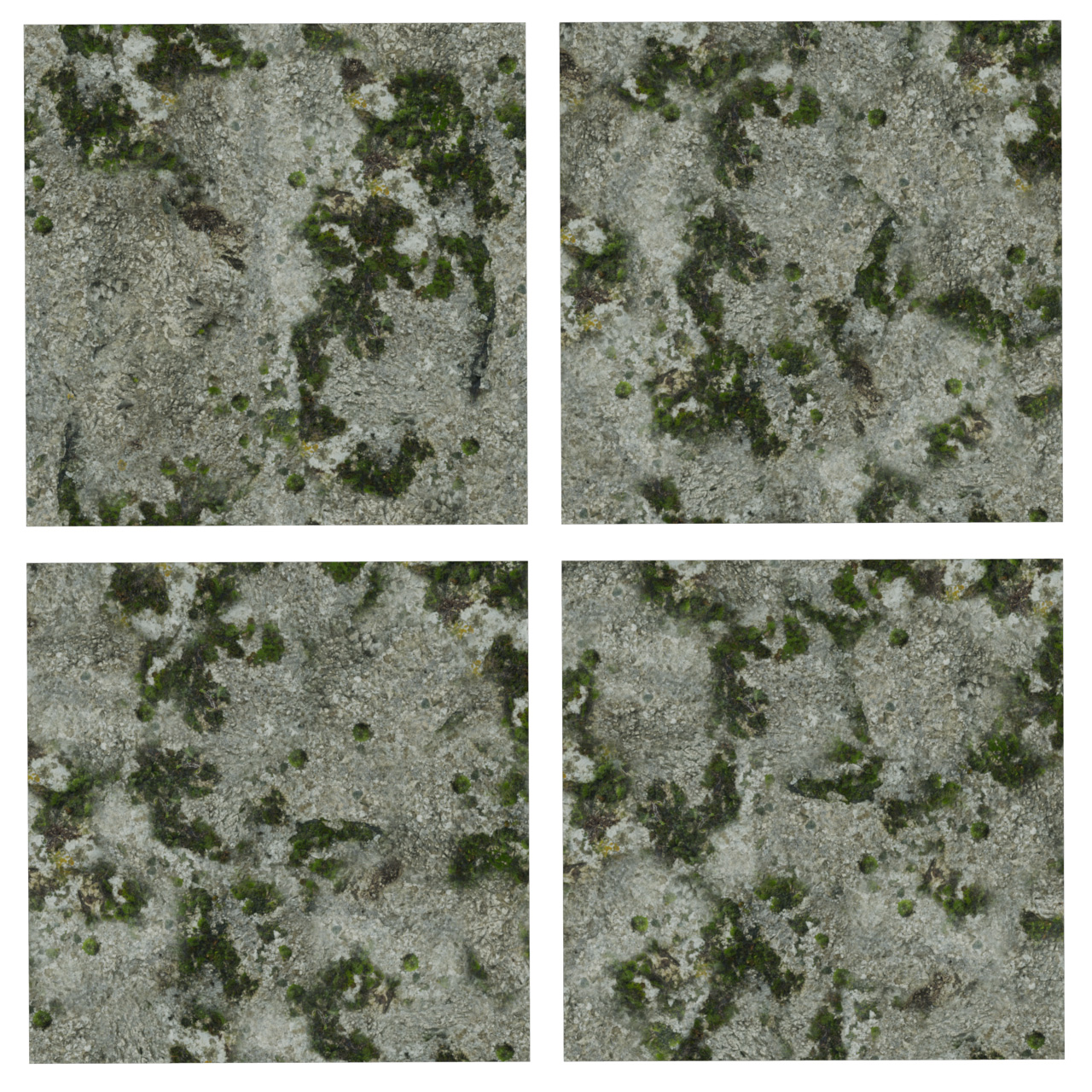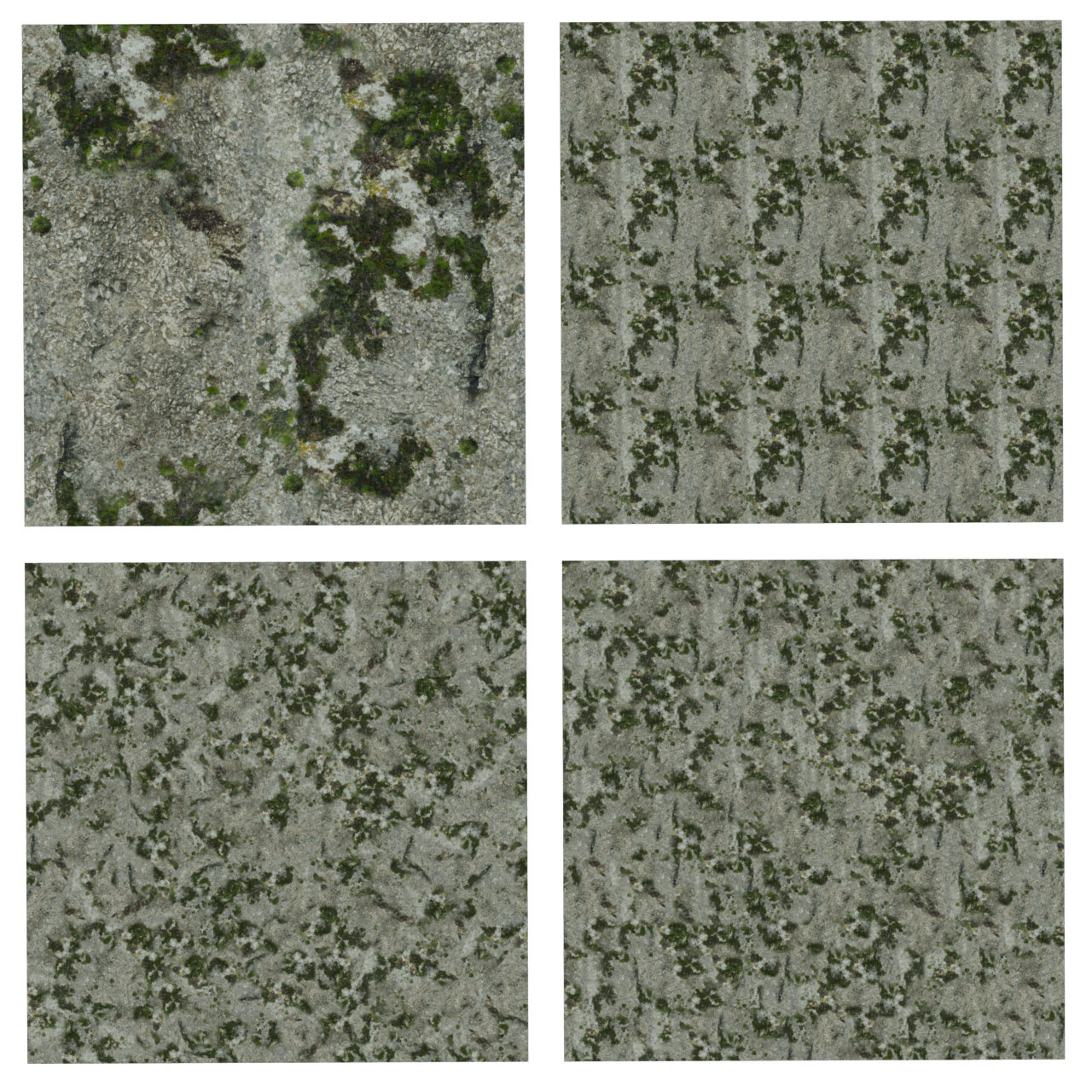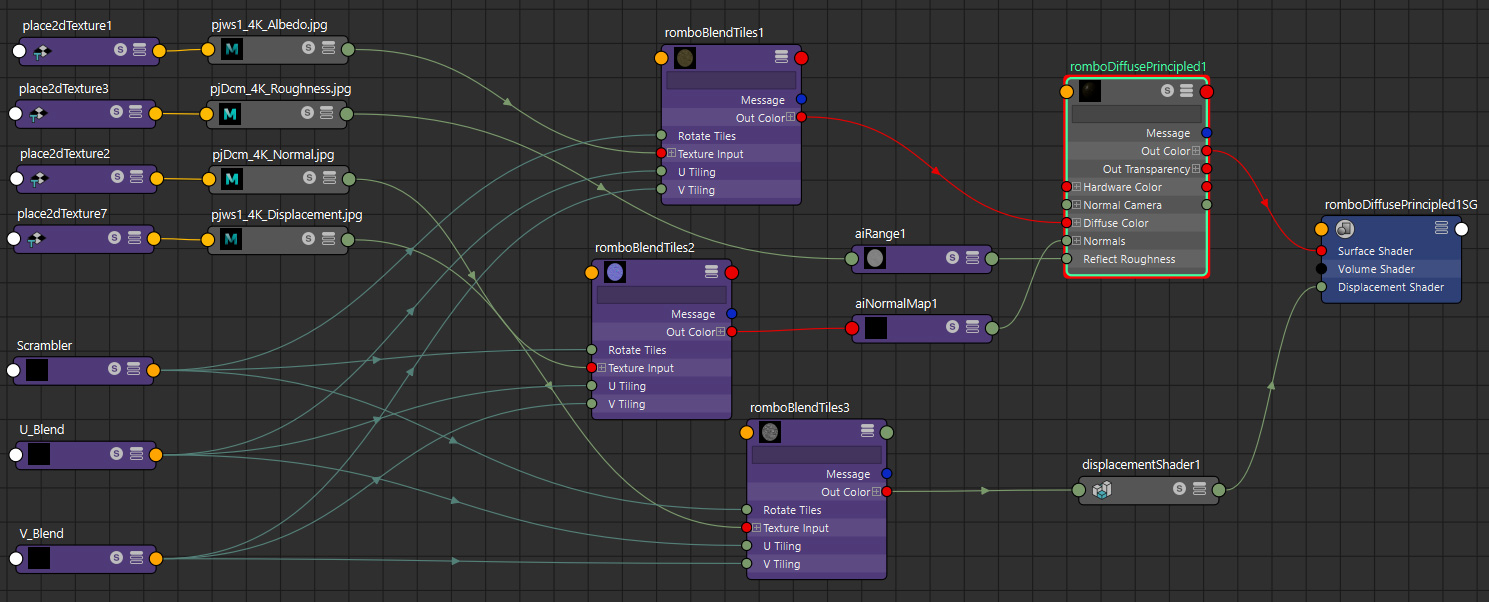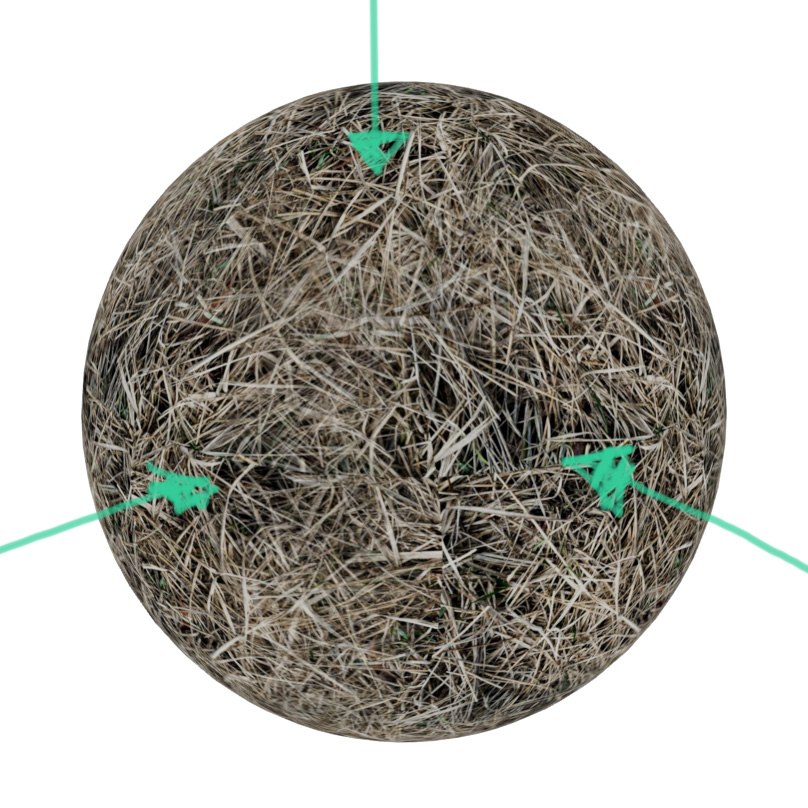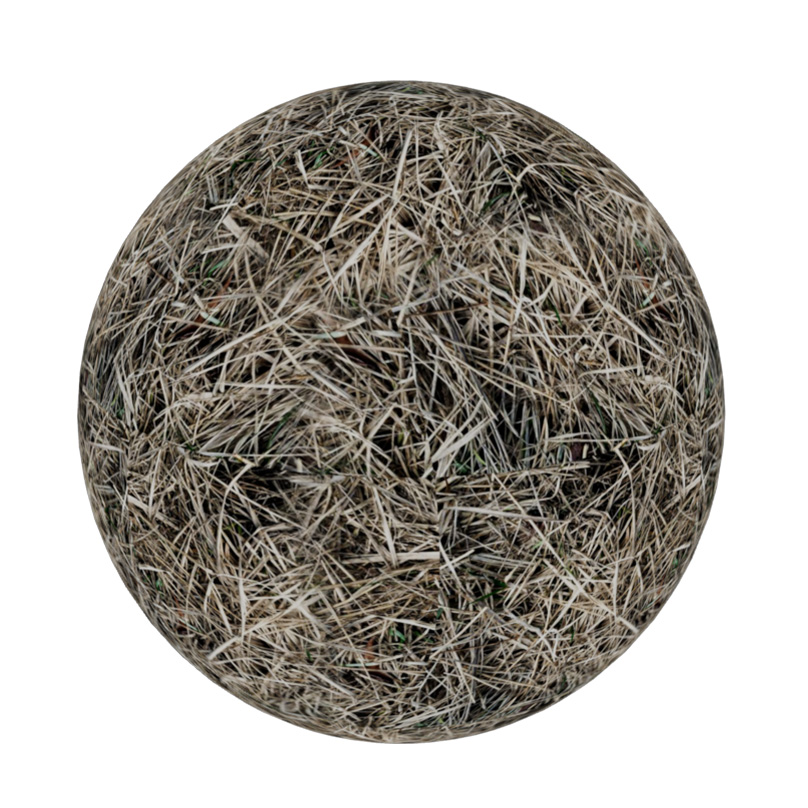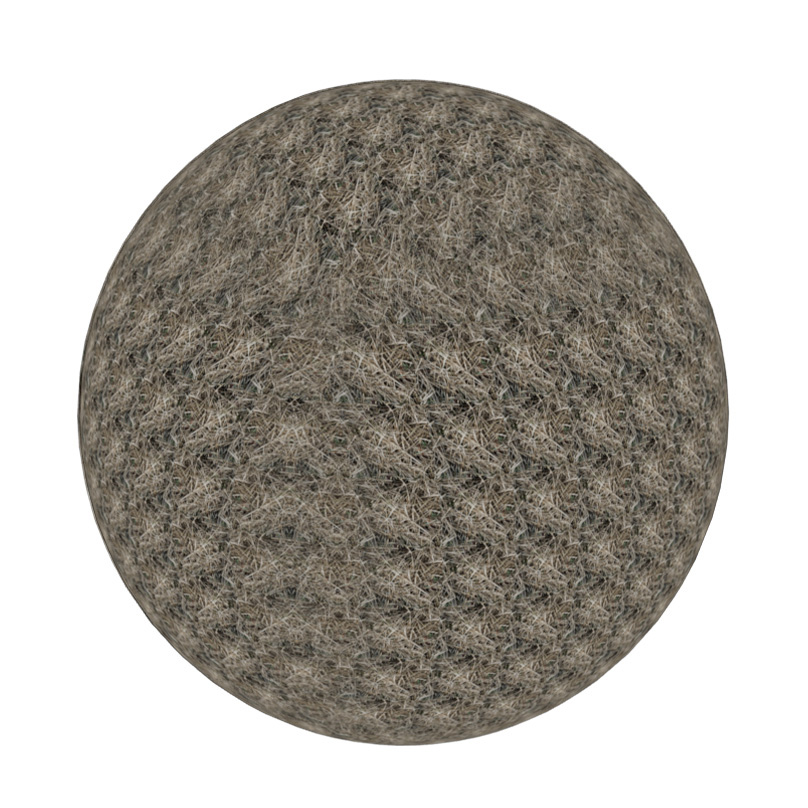Rombotools tile blender shader is a powerful stochastic texture synthetizer. It fully preserves texture characteristics and features. Basically it allows to have a texture as input and produce an infinite, non-repeating render-time texture from that.
Effectively as soon we start increasing UV repetitions on our texture what we get back is some awful tile artifacts. With rombo tile blender instead we get back some nice tile blending so that our textures can be tiled without obvious artifacts.
Below on the Porsche scene we use a 2k texture repeated 20x20 with no visible artifacts or repetitions. This would require for the same resolution without tileblender on both overview and closeup to have an almost impossible texture resolution. Arnold texture engine is fully supported as you can see with the blurred mipmaps in the background, derivatives, .tx files too, ACES etc.
It works great with normalmaps and displacement too.
Here in clockwise order (from upper left) 1x1, 2x2, 2x4 and a 4x4 tiling.. all with the same 2k textures. Performance penalty is almost non existent already in basic scenes like these, it's completely negligible in any real scene.. using the same 2k textures. But quality wise, we'd need 32k txs to match the same detail without rombo tileblender so we're way faster for the same detail quality.
A nice feature is being able to scramble the tiles so to avoid 'feature repetitions' .. if for example something in the texture is too much characterized like the enlongated rock that even without 'tiling repetitions' looks identical and aligned in the same exact way.. we can scramble the tiles so to have a more natural composition. Here the 2K textures we see in the closeup are the same used in the distant views with a 4x4 tiling.. meaning we'd need at least 32k textures to match this detail.
It can also be used to get easily on-the-fly render-time variations of the same texture as we do below on the stone with grass texture. We use the Rotate parameter to scramble texture features and approach a different variation of the same texture.
Below we see the original texture and then in clockwise order the tile artifacts we get while increasing the texture repetitions, eventually tile blender in action without repetition artifacts and a different variation of the same original texture.
To effectively use rombo tile blender all we have to do is to put it before a regular texture/image file and increase tiling from the tile blender GUI instead to use the texture own tile mode. Because we may have more than a single texture to tile without artifacts we can easily use external nodes to input the same tiling values as we can see here below in Maya hypergraph.
It can also automagically take care of our UVs repetitions.
Simply plug a tile blender between your texture and a material for example as we can see in the video below.
We use the same technology for our triplanar mapper.
Instead to naively linearly blend between projection planes we do some more advanced blending that effectively avoids 'ghosting' artifacts we can see in the standard Arnold triplanar shader. Ghosting is where we can see the planes actually intersecting each other.
With our blending technology instead we see we have no ghosting as with naive linear blending for a more convincing, procedural-like, blending style.
Cool thing is that we can still tile our texture without repetitions for an almost procedural approach.
This is instead how it looks with the standard triplanar shader that comes with Arnold. You can see both 'ghosting' where the triplanar projections meet and heavy tile artifacts.
Keywords :
tile blending, triplanar mapping, texture synthesis, stochastic texture, arnold, arnoldrender, arnoldrenderer, shader, material, reflect, reflection, microfacet, arnold shaders, arnold download, arnold materials, arnold renderer materials
